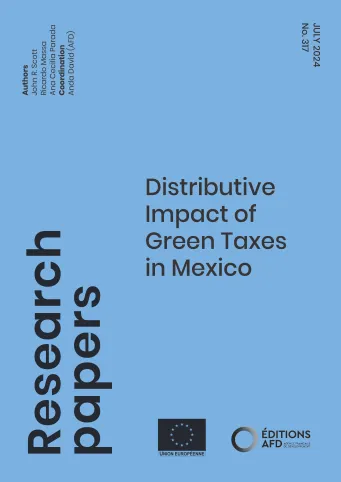Share the page
Distributive Impact of Green Taxes in Mexico
Published on

Carbon pricing is one of the most effective tools available worldwide for the regulation of greenhouse gas (GHG) emissions. There is extensive theoretical and empirical research on optimal pricing instruments, such as environmental taxes —carbon and energy taxes, in particular— and emissions trading systems. In Mexico, as in most countries globally, energy taxation, particularly through taxes on fuels, serves as the primary carbon pricing instrument.
This study quantifies the size and the distributive effects of green taxes (and anti-green subsidies) in Mexico, principally focusing on excise taxes (IEPS, from its initials in Spanish) levied on coal and fuels, as well as subsidies for residential electricity consumption. We analyse the distributive effect of fuel taxes within Mexico's broader fiscal system, including the main tax and public expenditure instruments, spanning the 2014-2022 period. In terms of the effect on extreme poverty, consumable income (disposable income net of subsidies and indirect taxes) shifts from a reduction of 2.3 ppt (with respect to household market income) to an increase of 0.5 ppt between 2014 and 2020. In other words, the increase in indirect taxes implies that their impoverishing effect completely eliminates the poverty-reducing effect of all direct transfers for the extremely poor. As in many other countries, energy subsidies in Mexico or their equivalent in energy tax exemptions, have been motivated by considerations of equity. However, given Mexico’s high income inequality, broad energy subsidies are proven to be inefficient redistributive instruments, especially compared to targeted or even universal transfers.
This paper is part of a research project supported by the Extension of the EU-AFD Research Facility on Inequalities.
Useful Information
-
Authors
-
John R. Scott, Ricardo Massa, Ana Cecilia Parada
-
Coordinators
-
Edition
-
317
-
Number of pages
-
73
-
ISSN
-
2492 - 2846
-
Collection
-
Research Papers
